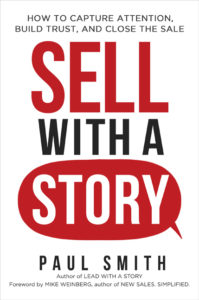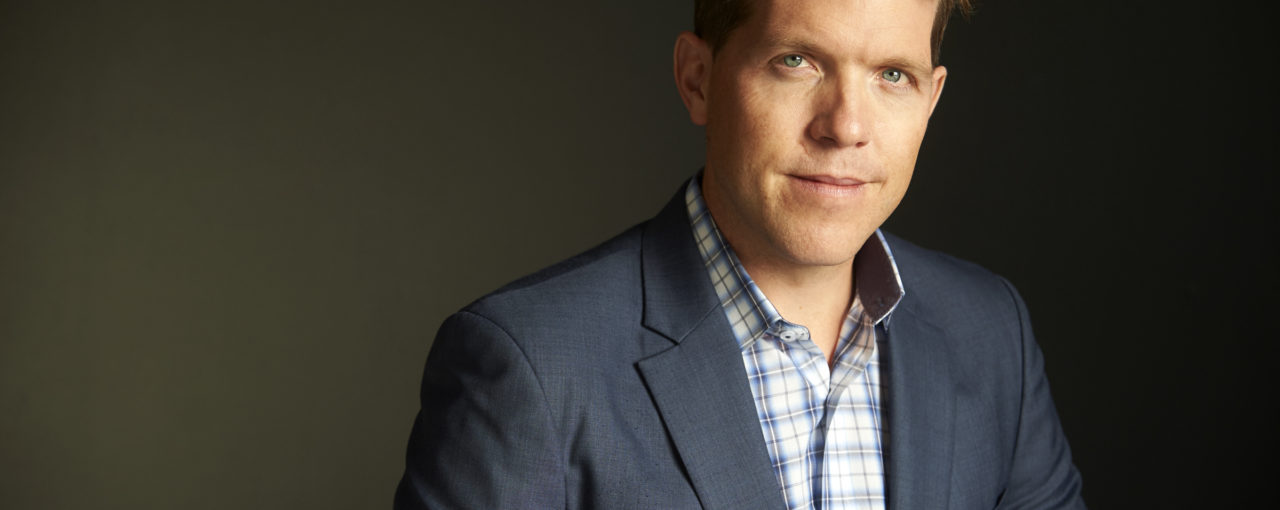Podcast (sell-with-a-story-series1): Play in new window | Download | Embed
Subscribe: RSS
 Customer success stories are probably the most common type of sales story. And they deserve to be. That’s because buyers trust what other customers have to say much more than what a salesperson says. So, your customer success story, even if you’re the one telling it, is far more credible than just your opinion.
Customer success stories are probably the most common type of sales story. And they deserve to be. That’s because buyers trust what other customers have to say much more than what a salesperson says. So, your customer success story, even if you’re the one telling it, is far more credible than just your opinion.
But, unfortunately, what often passes for a customer success story, isn’t one. Not because it isn’t a success. But because it isn’t a story. A positive testimonial is not a success story. A testimonial can be as simple (and uninspiring) as quoting one of your customers saying, “I use this product and it works great.”
And that’s fine as far testimonials go. You can certainly use good testimonials. But customer success stories are more involved. For example, OnStar plays actual recordings from emergency calls in its advertisements. Those are success stories. eHarmony almost went out of business until 10 couples went on James Dobson’s radio program to share their relationship success stories. Not just, “Hey we tried it and now we’re married,” but their whole stories.
So, the example I want to share here has an interesting twist. And that is that it illustrates this counter-intuitive fact: You can tell a customer success story about companies that aren’t even your customers and whose success you had nothing to do with! And it isn’t the least bit dishonest. It’s actually quite brilliant—and it works. Here’s a case in point.
Febreze
Shane Skillen is co-founder and CEO of Hotspex, a market research firm in Toronto. One of the success stories he tells prospective clients is about Febreze air freshener, a brand he’s never worked on.
In 1996, Procter & Gamble launched Febreze in lead markets with a strong marketing campaign. The brand was targeted at people with heavy odor problems like smoky bars, house pets, or teenage boys.
Well, it was a complete flop, which raised the obvious question: “why?”
After some new research, they realized that with constant exposure to bad odors, you become desensitized, so you don’t notice the bad smell as much. So, they decided to interview heavy users (people who loved Febreze) to find out why they used it so much.
One woman in Scottsdale told them she just used it for normal cleaning, as a “nice final touch.” She said, “Spraying feels like a little mini-celebration when I’m done with a room.” And that was the breakthrough! Other interviews confirmed that heavy users of Febreze were using it to enjoy a moment of satisfaction for a job well done when they finished cleaning something.
Febreze, apparently, was a great way to give whatever they’re working on that just-cleaned smell, which made it something worthy of that mini-celebration.
Two years later, Febreze was restaged to be a reward. Sales doubled in the first two months. And today it’s a billion-dollar brand.
It turned out that P&G had been focusing on what Shane calls the wrong “need-state.” And that second round of more creative research identified the right need-state.
Why it works
Shane tells this story because his company has a proprietary need-state discovery model that uses some of the same techniques the Febreze team used, plus some unique ones, to help companies find the right need-state the first time. So they can avoid the initial failure Febreze had to suffer.
Now, he could tell his prospective clients about his own customers that he actually has helped with Hotspex’s need-state model, and sometimes he does. But he still finds value in telling the Febreze story because it’s a better-known example of the kind of problem his company works on and the kind of solution he provides. He also doesn’t have to worry about accidentally sharing any confidential client information with the Febreze story—because he doesn’t have any.
Recommendation
If you’re having trouble coming up with your own customer success stories—or even if you’re not—spend some time brainstorming the most widely recognized success stories in your industry that you think bear a plausible resemblance to the experience your customers have with you. Share those stories, and connect the dots.
Use these links to subscribe to this podcast on iTunes or Stitcher, or Podbean.
Source: Sell with a Story: How to Capture Attention, Build Trust, and Close the Sale, by Paul Smith.
—
 Paul Smith is one of the world’s leading experts on business storytelling. He’s a keynote speaker, storytelling coach, and bestselling author of the books Lead with a Story, Parenting with a Story, and Sell with a Story.
Paul Smith is one of the world’s leading experts on business storytelling. He’s a keynote speaker, storytelling coach, and bestselling author of the books Lead with a Story, Parenting with a Story, and Sell with a Story.


 Connect with him via email here.
Connect with him via email here.
Follow him on Facebook, LinkedIn, Twitter, and Instagram.
Sign up for his newsletter here to get one new story a week delivered to your inbox.

